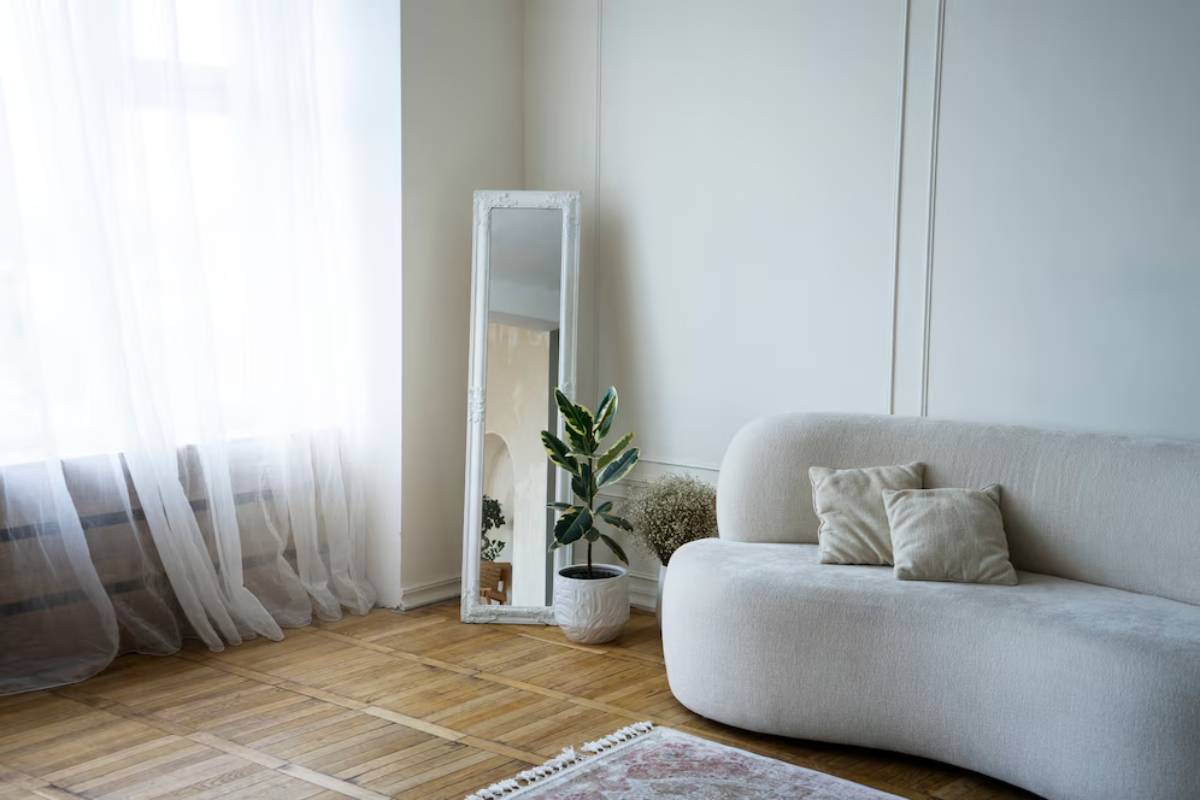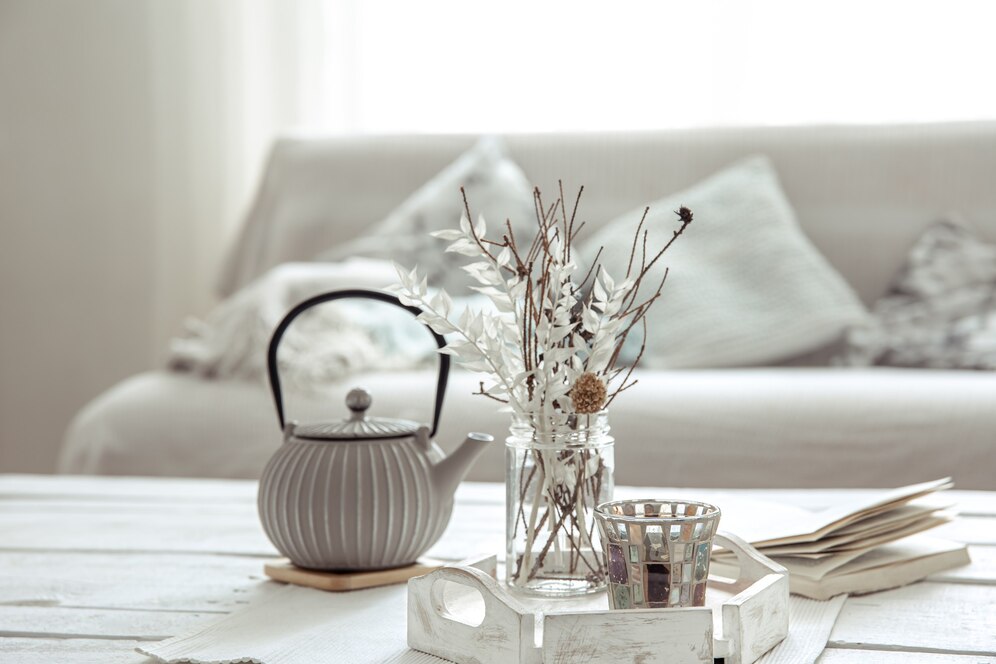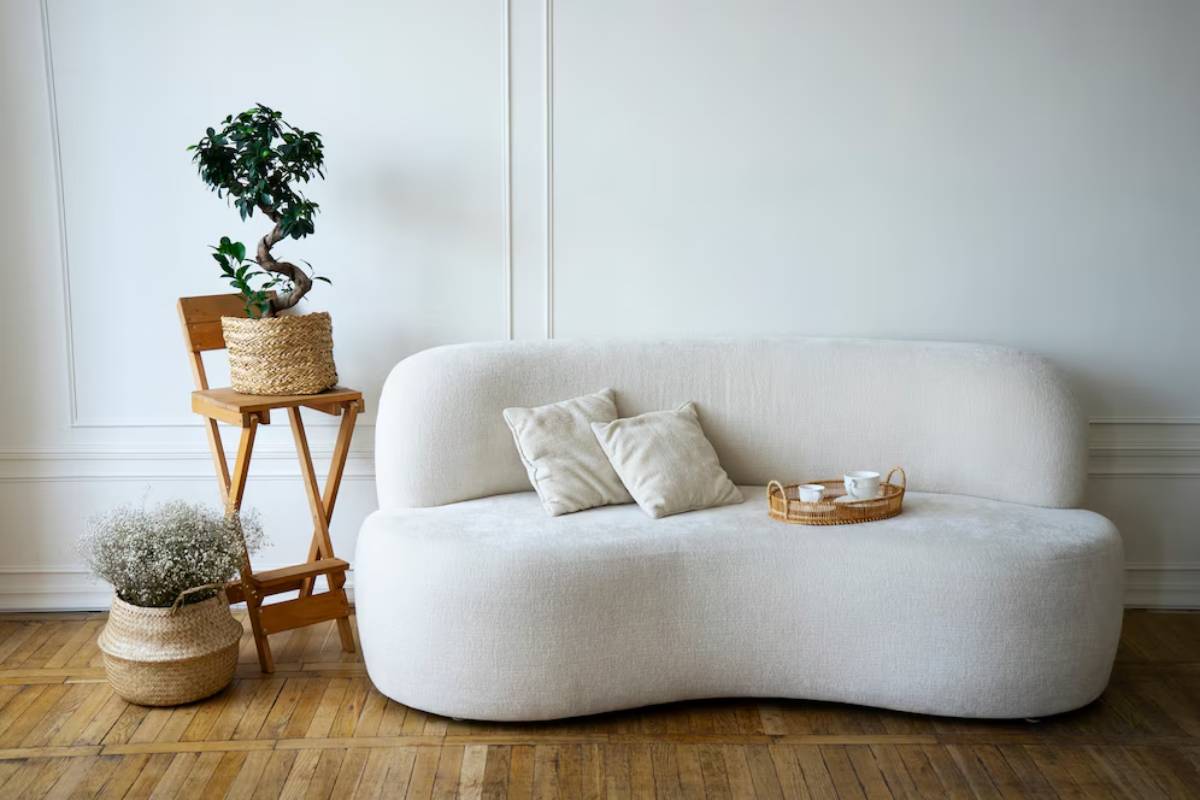
How to Transition Your Space into a Scandinavian Style
Scandinavian design isn’t just about white walls and wooden floors—it’s about intentionality, comfort, and effortless calm.
Our team found that transforming your home into a Scandinavian-style sanctuary isn’t about a complete overhaul—it’s about thoughtful edits and mindful layering. With its emphasis on natural light, honest materials, and understated beauty, Nordic design offers a peaceful alternative to visual clutter and fleeting trends.
In this guide, we’ll walk you through how to transition your space into a Scandinavian home—from decluttering and selecting a muted palette to embracing natural textures and functional furniture. Whether you’re refreshing a single room or redefining your entire home, this guide will help you transform your space with purpose and ease.
Pro Tip: Scandinavian design is less about starting over and more about stripping back to what matters most.
Quick Guide: Your Scandinavian Home Transformation
- Clear visual clutter and keep only functional or meaningful items.
- Choose a light, cohesive colour palette inspired by nature.
- Let natural light take the lead in your layout and styling.
- Incorporate natural materials like wood, wool, and linen.
- Opt for simple, timeless furniture with clean lines.
- Layer cozy textures for softness and comfort.
- Use décor sparingly, but with intention.
Important: Scandinavian homes are calm and curated—not empty. Every item has a role to play.
Step 1: Declutter and Reframe Your Space
Scandinavian design begins with clearing space—not for the sake of minimalism, but to make room for meaning.
Start With:
- Removing excess furniture or décor that doesn’t serve a purpose
- Rehoming duplicate or trend-based accessories
- Creating open surfaces and clear sightlines
Don’t aim for emptiness—aim for intentional simplicity. Ask yourself: Does this item add value to how I live or feel in this space?
Step 2: Repaint with a Light, Natural Palette
Colour sets the tone—and in Nordic interiors, the tone is calm and grounded.
Choose From:
- Warm whites and creams for walls
- Soft greys, beiges, and greige for depth
- Muted greens, blues, and rusts as subtle accents
- Charcoal or matte black in small doses for contrast
Avoid stark white or overly saturated tones. Scandinavian palettes draw inspiration from nature, not neon.
Design Tip: Use the same neutral palette across rooms for cohesion, then layer texture to create variation.
Step 3: Invite in as Much Natural Light as Possible
Light is the cornerstone of Scandinavian interiors. In Nordic regions, where daylight is limited in winter, homes are designed to capture every available ray.
Light-Friendly Adjustments:
- Replace heavy curtains with sheer linen panels
- Keep windowsills clear or minimally decorated
- Hang mirrors opposite windows to reflect and multiply light
- Choose low-profile furniture near windows to avoid obstruction
Pro Tip: Consider repainting dark trims in white to brighten window frames and amplify incoming light.
Step 4: Embrace Natural Materials and Organic Finishes
Scandinavian homes connect the indoors with nature through the use of authentic, tactile materials.
Key Materials to Include:
- Pale wood (ash, birch, white oak) for flooring and furniture
- Wool and linen in cushions, throws, and upholstery
- Clay, ceramic, or stone for decorative objects and tableware
- Woven baskets or cane accents for texture and function
Mix textures—not colours—to add richness to a neutral backdrop. This keeps the space warm, not sterile.
Step 5: Focus on Clean-Lined, Functional Furniture
Nordic furniture is understated, often floating off the ground, with subtle curves or geometric edges. Prioritise form that serves function.
Characteristics of Scandi Furniture:
- Simple silhouettes with soft, rounded lines
- Natural wood legs and frames
- Low-profile seating that feels airy, not bulky
- Storage solutions that double as design features
Choose pieces that work hard but don’t demand attention—let the room as a whole do the talking.
Step 6: Layer Cosy Textures for Warmth
A clean room doesn’t have to feel cold. Texture is how Scandinavian interiors stay inviting without excess décor.
Cosy Layering Essentials:
- Chunky wool throws on beds and sofas
- Linen cushions in earthy tones
- Sheepskin rugs draped over chairs
- Layered bedding with tonal variation
Keep it soft, understated, and naturally imperfect—crinkled linen, hand-thrown ceramics, brushed metals.
Texture Tip: Stick to 3–4 material types per room and repeat them for rhythm and harmony.
Step 7: Curate Décor With Restraint
Less is more—but less doesn’t mean nothing. Scandi spaces include décor that is personal, organic, and intentional.
Scandinavian-Inspired Décor Ideas:

- A single ceramic vase with dried botanicals
- Framed black and white photography
- A sculptural table lamp in matte ceramic or paper
- One or two artisan pieces with handmade details
- Stacked books in natural colours, without dust jackets
Avoid gallery walls or heavy clutter—space is part of the design.
Room-by-Room Scandinavian Makeover Ideas
| Room | Key Transformation Tips |
| Living Room | Neutral sofa, textured rug, soft lighting, functional coffee table |
| Bedroom | Linen bedding, bedside sconces, wooden bed frame, warm throw |
| Kitchen | Open shelving, matte hardware, light cabinetry, wood cutting boards |
| Bathroom | Stone accessories, white tile, natural bath textiles, plants |
| Entryway | Hooks, slim bench, woven basket, mirror to reflect light |
Best Scandinavian Brands for Furniture & Décor
| Category | Brand |
| Furniture | Muuto, HAY, Ferm Living, &Tradition |
| Lighting | Louis Poulsen, Menu, Gubi |
| Textiles | Lapuan Kankurit, Tekla, Linum |
| Home Accessories | Skagerak, Normann Copenhagen, Iittala |
| Budget-Friendly Options | IKEA (Scandi heritage at accessible prices) |
Warning: Avoid mixing Scandinavian with overly ornate or industrial elements unless done deliberately. The beauty of Nordic design lies in restraint, not reaction.
Frequently Asked Questions

1. Do I have to get rid of all my colour?
Not at all. Scandinavian design uses muted, nature-inspired colours. You can keep colour—just soften it and reduce the contrast.
2. Can I still have art and books in a Scandi room?
Absolutely. Art and books are key to personalisation—just display them thoughtfully, and avoid visual noise.
3. What if my home has dark floors or walls?
Work with them. Lighten the space through soft textiles, pale furniture, mirrors, and strategic lighting. You don’t need to rip everything out.
4. Do I need to go full minimal to be Scandi?
No—Scandinavian interiors can be cosy and layered. The key is intentionality—nothing should feel random or cluttered.
5. How can I Scandinavian-ize my home on a budget?
Start with paint, textiles, and lighting. These small updates make a big impact. IKEA, H&M Home, and second-hand shops are great places to source affordable pieces.
Transform with Intention, Not Excess
Transitioning your space into a Scandinavian style is not about chasing a trend—it’s about building a home that supports calm, comfort, and clarity.
By focusing on light, natural textures, thoughtful furniture, and curated simplicity, you can shape timeless, tactile, and livable interiors. The transformation begins with what you remove—and ends with what you choose to keep.
So slow down, simplify, and design a space that makes room for what matters most.


